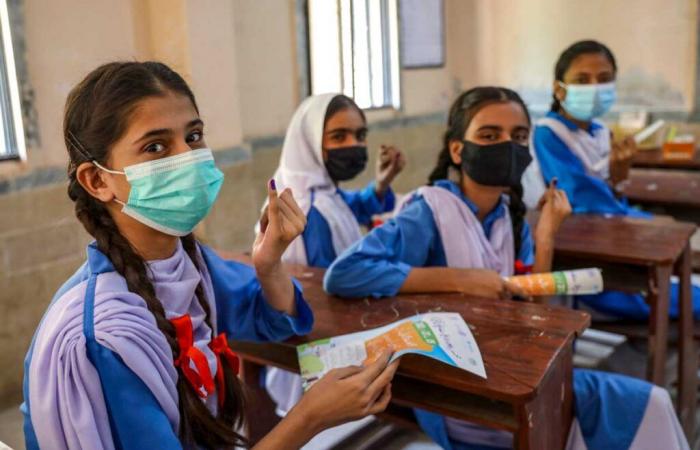Later this month, the WHO and CDC will release their annual global measles statistics. We hope that the number of deaths will be lower than last year (136,000), although there are fears that it will still be much higher than it should be.
Measles is far from harmless. With an R0 of 18 (i.e. the number of people that an infected person can contaminate on average), it is one of the most contagious viruses known. Entering a room two hours after an infected person has left still exposes you to the virus, unless you have been vaccinated or already infected.
What happens next depends on several factors. If you are healthy, well-nourished, and live in a rich country, you have a good chance of getting through it: about 999 cases out of 1,000 resolve without death. This still leaves a risk of one in a thousand cases of dying, often due to secondary infection when the measles virus weakens the immune system.
But living conditions make a big difference. Malnutrition is a major factor, as is the likelihood of exposure to a high viral load, for example in crowded environments where the virus is actively circulating. In some poor countries, mortality rates can reach up to 15% during epidemics.
And surviving measles doesn’t always mean recovering completely. Just 20 years ago, measles was the leading cause of childhood blindness in poor countries, and it continues to rob children of their sight today.
Hearing loss caused by measles is likely underreported. Measles-related encephalitis is known to cause serious neurological sequelae in survivors, such as epileptic seizures, paraplegia or intellectual disability.
Sometimes an apparently cured infection reappears in the brain years later as subacute sclerosing panencephalitis (SSPE), which begins subtly with headaches and memory loss but inevitably leads to death.
Measles can also compromise the immune system, erasing immune memory against other pathogens, leaving children more vulnerable to illness for years after recovery.
But measles vaccines are extremely effective. Two doses provide almost complete protection, meaning vaccinated children are safe. And if 95% of the population is vaccinated, herd immunity is achieved, thus protecting the entire community.
So why does measles continue to claim victims? Because, quite simply, not enough people are vaccinated. The COVID-19 pandemic has widened this immune gap: in 2019, 86% of eligible children had received their first dose of vaccine. In 2023, this rate fell to 83%.
Yet we have made considerable progress. Before the measles vaccine, the virus killed about 2.6 million people a year. Between 2000 (the year Gavi was created) and 2022, the WHO estimates that vaccination has saved 57 million lives. In some countries, measles has been so well controlled that services have been able to close their doors.
However, in 2022, measles still caused 136,000 deaths, a figure that is far too high. Gavi is therefore mobilizing funds for its next five-year program (2026-2030). Raising the $9 billion needed will make these life-saving vaccines accessible to millions of children in the most vulnerable countries.
The fight against measles is progressing. Follow us this week to discover major vaccination campaigns, promising innovations and the path that brings us closer to eliminating measles.
In the meantime, we’ve collected some of our favorite measles-related articles from our archives for you.
Anatomy of an epidemic: measles hits urban India
Measles has been rampant in Thane, near Mumbai, after vaccination coverage declined during the pandemic. Members of VaccinesWork visited the site to learn more about its devastating effects and how social factors may have contributed to its spread.
Read the article
National measles campaign in South Sudan bears fruit
In Awerial County, vaccination gray areas included cattle camps and a remote island on a lake. Ambitious mobile awareness efforts carried out in April, however, helped to curb the surge in cases observed at the start of the year.
Read the article
‘I’ll never forget’: Father in Pakistan recalls nearly losing his baby to measles.
In Pakistan, mass vaccination campaigns against the virus are progressing. But for those who are not vaccinated, the risk still remains alarming.
Read the article
After measles, a life in the dark
Measles was once the leading cause of childhood blindness in poor countries. Vaccination and vitamin A supplementation have reduced this risk, but cases of measles are now on the rise. In Ethiopia, VaccinesWork met survivors who had lost their sight.
Read the article
History: finding a vaccine against measles
A look back at the history of the measles vaccine, a scientific adventure carried out in the daring beginnings of vaccinology.
Read the article






